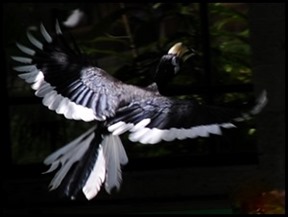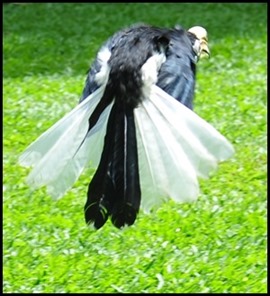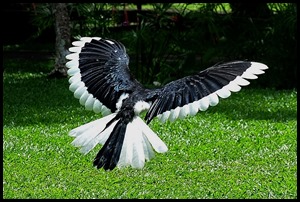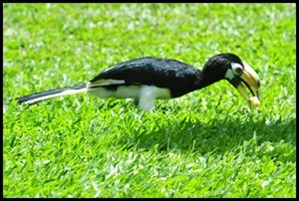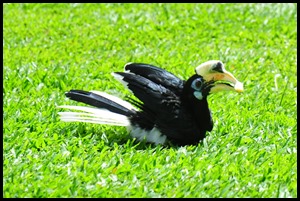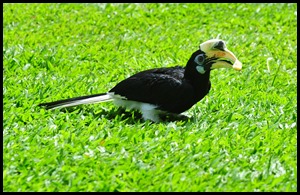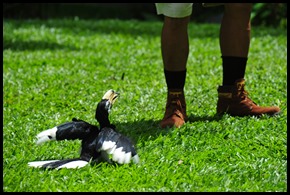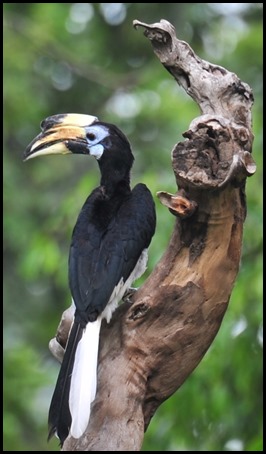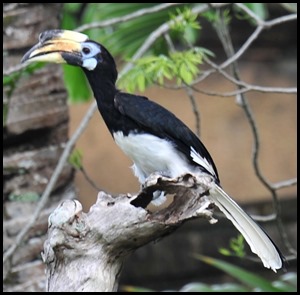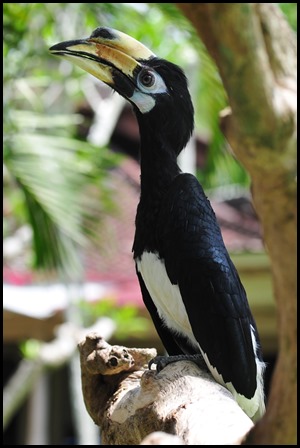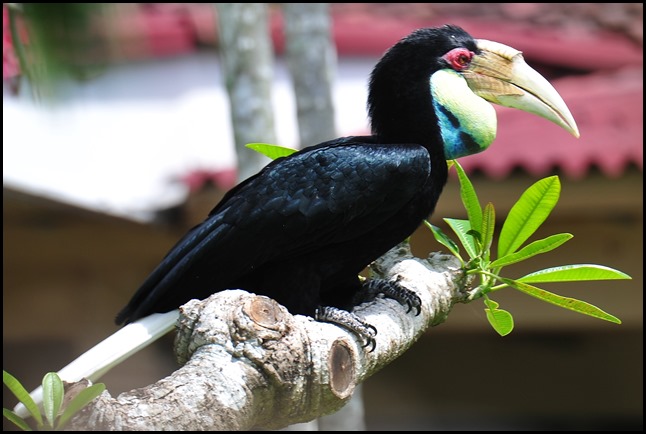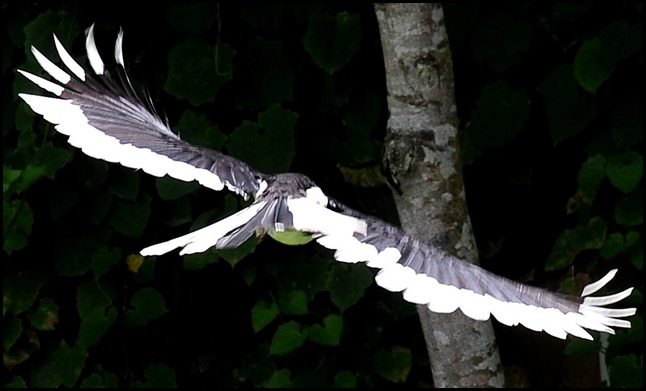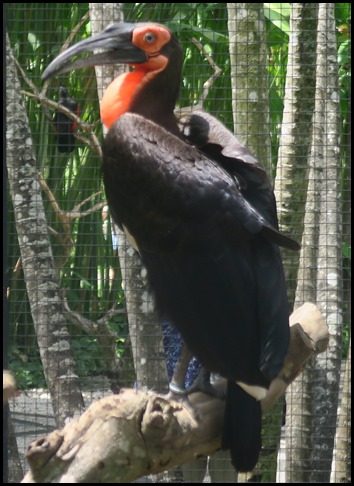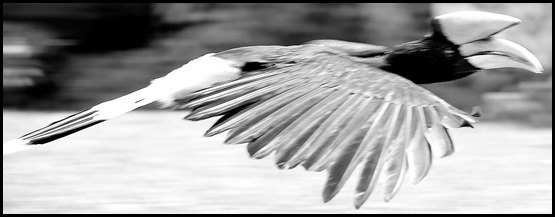BBP Hornbills

|
Some of the Hornbills We Met
in Bali Bird Park
 We settled at the Bali Bird Park ‘Meet
the Stars Show’ and our first glimpse of a rhinoceros hornbill was as he swooped in. Wow.
Beauty of Birds says:
Hornbills (Bucerotidae)
are a family of bird found in tropical and sub-tropical Africa and
Asia.
They are characterised by a long, down-curved bill which is frequently brightly-coloured and sometimes has a casque on the upper mandible. Both the common English and the scientific name of the family refer to the shape of the bill, "buceros" being "cow horn" in Greek. In addition, they possess a two-lobed kidney. Hornbills are the only birds in which the first two neck vertebrae (the axis and atlas) are fused together; this probably provides a more stable platform for carrying the bill. The family is omnivorous, feeding on fruit and small animals. They are monogamous breeders nesting in natural cavities in trees and sometimes cliffs. A number of species of hornbill are threatened with extinction, mostly insular species with small ranges. 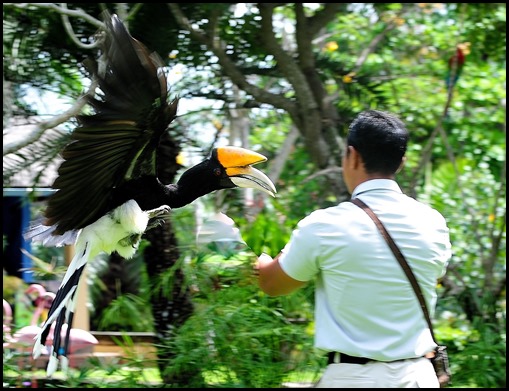 For such a big
bird he landed on his keeper quite neatly.
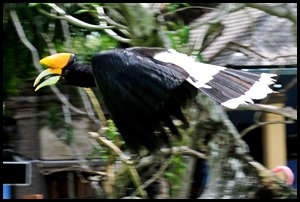  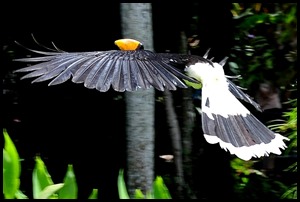 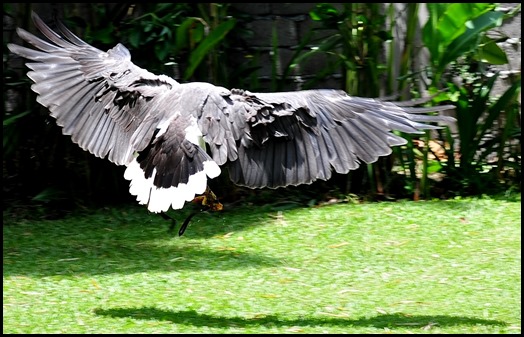 Off he went
again.
Wiki says: The rhinoceros hornbill (Buceros rhinoceros) is one of the largest hornbills, adults being approximately the size of a swan, 91–122 cm (36–48 in) long and weighing 2–3 kg (4.4–6.6 lb). In captivity it can live for up to 90 years. It is found in lowland and montane, tropical and subtropical climates and in mountain rain forests up to 1,400 metres altitude in Borneo, Sumatra, Java, the Malay Peninsula, Singapore, and southern Thailand. Status in the wild – Near Threatened: The rhinoceros hornbill faces a number of threats, including loss of habitat and hunting for its meat, its feathers and its casque, which can be carved into ornaments and jewellery, and is as dense as ivory. 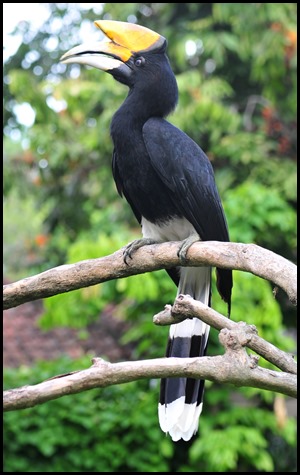  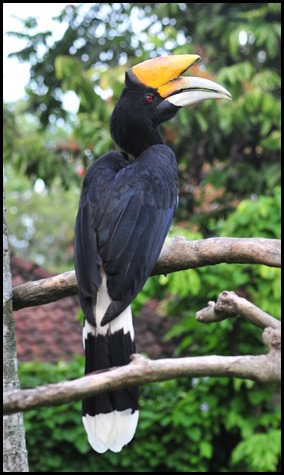 He sat in a tree and
posed for us.
The National Aviary says: Rhinoceros Hornbills (like other hornbills) practice one of the most ingenious nesting rituals of any bird. When the female is ready to lay her eggs, she goes into a hollow tree cavity and helps the male seal the entrance with a paste made of fruit, mud, and faeces. The pair leaves only a small slit, through which the male feeds the female (and later the chicks) for the next four to five months. The female keeps the inside of the nest cavity clean by pushing uneaten food and faecal matter back out through the same slit. When the chicks are about three months old, the female breaks herself out -- and both parents and offspring collaborate to re-seal the chicks inside for another three months. Both parents continue to care for the chicks until they are old enough to break out of the nest on their own and fly free.  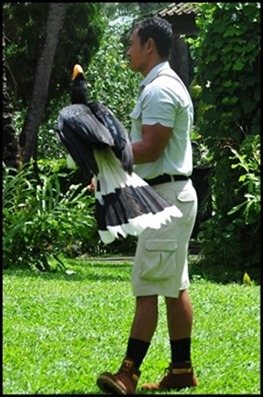  Then he returned to his
keeper for a treat.
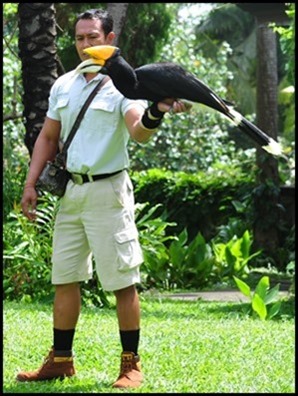
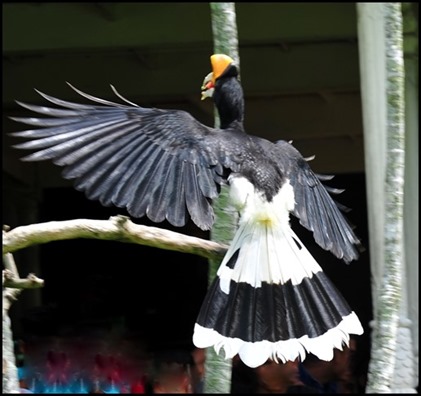 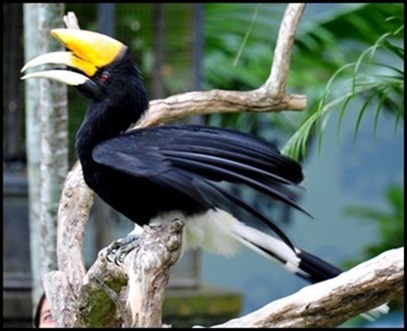 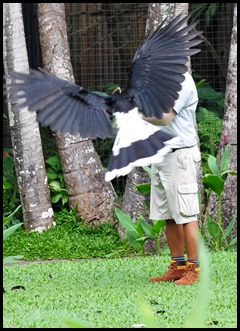 He
was launched, landed and returned once more.
 Then
he flew off toward his hutch, treat in his huge, heavy bill.
A smaller chap flew in.
We were watching a real comic
A natural entertainer, especially when he begged for a piece of mango.
Such a poser...........
.................not so this shy lady.
How stunning she looked flying back to her hutch. Next, it was time to walk around the park.
We adored this ground hornbill
Wiki says: Ground hornbills are large, with adults around a metre tall. Both species are ground-dwelling, unlike other hornbills, and feed on insects, snakes, other birds, amphibians and even tortoises. They are among the longest-lived of all birds, and the larger southern species is possibly the slowest-breeding (triennially) and longest-lived of all birds – (mmm dispute that fact, on looking it up they live between fifty and sixty years. We know of an albatross called Wisdom who hatched a chick aged sixty two in 2014 and parrots......). We had a smashing time with these big birds but now time for an ice cream, a ten minute sit down and then to meet Yomi and Keta.
ALL IN ALL LOVED THEM GREAT CHARACTERS |
